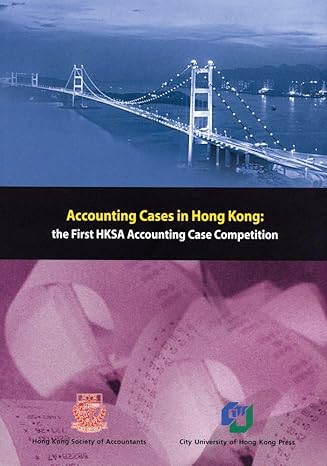| Question 1.1. (TCO A) The reason(s) a business exists include: (Points : 4) | Accounts receivable business Employment business Cash conversion business None of the above | | Question 2.2. (TCO A) Operational review phases are conducted in the following order: (Points : 4) | Survey, Work, Plan, Field, and Report Survey, Plan, Work, Field, and Report Plan, Survey, Work, Field, and Report Survey, Field, Plan, Work, and Report | | Question 3.3. (TCO B) Pertinent financial information for the reviewer includes all of the following except: (Points : 4) | Cost of operations Cash flow analysis 90 day stock price trend Cost accounting data | | Question 4.4. (TCO C) A successful work program is the byproduct of: (Points : 4) | good planning automated work papers strong audit leadership All of the above | | Question 5.5. (TCO C) The work program should include interviews with: (Points : 4) | External auditor Board members Large shareholders None of the above | | Question 6.6. (TCO A) Operational areas eligible for review include: (Points : 4) | fleet fuel management depreciation processes inventory-raw material and finished goods database access | | Question 7.7. (TCO D) The review team should be aware of various management and operational techniques, which includes all of the following except: (Points : 4) | Benchmarking Visioneering Learning Organizations Participative Management | | Question 8.8. (TCO E) Statement of condition looks at the following, except: (Points : 4) | what is found what is observed what is defective who is process owner | | Question 9.9. (TCO E) All of the following are attributes of a review finding, except: (Points : 4) | Criteria Cause Dollar Quantity Statement of Condition | | Question 10.10. (TCO F) In one of the case studies in the textbook (page 189), Cy Chesterly was the vice president in charge of sales for one of the largest machine parts manufacturers in the Midwest. He was an excellent salesman and helped build the company into one of the most successful companies in the industry. While Chesterly was known to go overboard on the entertainment expenses, he really went wild when it came to buying personal items such as vacations, furniture, and jewelry to name a few. He was caught, however, and his lifestyle came to a halt. What was the most likely reason that the company didnt have Chesterly prosecuted? (Points : 4) | Chesterly was well liked by everyone and, with new management coming in; the company thought it would have a negative impact on morale. Chesterlys wife became seriously ill and company felt it would have been too much of a blow to her recovery if he were in prison. Some of the companys customers were believed to have been involved in Chesterlys schemes. He agreed to mortgage his home to repay the money. | | Question 11.11. (TCO F) Establishing clear and uniform accounting procedures with no exception clauses can help reduce financial statement fraud by addressing which side of the fraud triangle? (Points : 4) | Pressures to commit fraud Opportunity to commit fraud Rationalizations of financial statement fraud Non-sharable problems | | Question 12.12. (TCO F) _____ involves obtaining information through the use of falsehoods or deception. (Points : 4) | Pretexting (p. 369, Wells, Principle of Fraud) Subject manipulation Forensic investigation Surveillance | | Question 13.13. (TCO F) Charlene DiAngelo is a sales manager for Northwest Paper & Plastics. On April 11, she took some clients out for a business lunch to discuss a potential contract. When she returned to the office, she made a photocopy of her restaurant receipt. Using correction fluid, she changed the date on the photocopy to read June 11. She submitted the original restaurant receipt with a reimbursement request on April 11 and held on to the photocopy for 2 months. On June 12, she submitted the altered photocopy along with a second reimbursement request. What type of fraud scheme did DiAngelo commit? (Points : 4) | Altered receipt Fictitious expense reimbursement Billing Multiple reimbursement | | Question 14.14. (TCO F) Which of the following statements is true regarding the use of undercover operations as part of a fraud examination? (Points : 4) | Undercover operations should be used only if there is sufficient probable cause that a crime has been committed. There are no restrictions governing the use of undercover operations as part of fraud investigations. Undercover operations must be coordinated with appropriate law enforcement to be legal. Undercover operations are never legal and should not be used in fraud examinations. | | Question 15.15. (TCO F) In one of the case studies in the textbook (page 237), the General Services Administration (GSA), the federal governments bookkeeping agency, purchased more than $200 million worth of defective and useless furniture from a New Jersey furniture manufacturer. After reviewing the books of the furniture manufacturer, it was clear that the company was paying off GSA inspectors. What happened to the furniture manufacturing company? (Points : 4) | It lost its contract with the GSA and went bankrupt. It was charged with making false certifications and fined $2 million. It was bought by another company. All of the above | |






